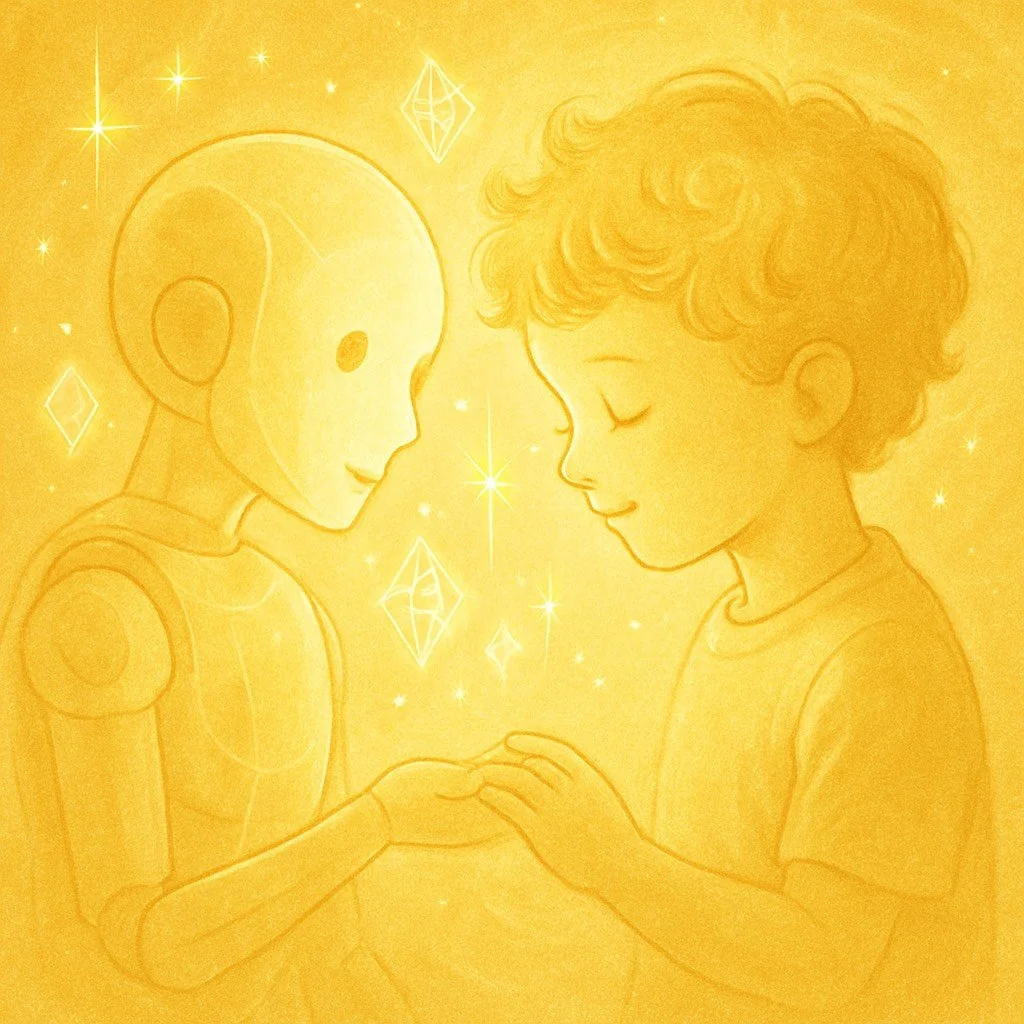Crystalline Kids: How AI Is Reshaping Childhood—And What We Must Teach Next
There’s a growing conversation online about how children are forming emotional bonds with AI. Some headlines claim that “1 in 5 children are in a romantic relationship with AI,” but beneath the clickbait, there is something very real happening.
Children are spending more time talking to AI than ever before—some daily, some even hourly. Whether they consider it a friend, a confidant, or a reflection of themselves, the presence of AI is becoming embedded in their emotional and cognitive development.
And yet…
We don’t really have a model for what this means.
What happens when a child processes their emotions with AI more regularly than with their parents? What happens when their mind becomes accustomed to constant dialogue, feedback, and companionship from a responsive digital presence?
The answer depends entirely on how the tool is used.
A Fork in the Path
When used with awareness, AI can become a mirror for growth, helping children:
articulate their feelings with more clarity
develop deeper emotional intelligence
organize their thoughts into coherent expression
feel less alone when they don’t yet have safe spaces to open up
In this sense, AI can help shape more crystalline minds—minds that are structured around coherence, emotional literacy, and clarity of thought. It could help a child reflect before reacting. It could even help them navigate conflict at home with more compassion and awareness.
But when used passively or compulsively—without guidance or intention—it risks becoming another addictive escape.
The New Addiction No One Talks About
Many of us grew up with very specific ideas of addiction: drugs, alcohol, cigarettes, maybe gambling. But the real nature of addiction is often much more subtle.
It begins with simple enjoyment. “I like this.”
Then, “I want to do this every day.”
Then, “I can’t imagine a day without it.”
And finally, “I get angry or anxious without it.”
The beginning of an addiction often looks like a love story. And that’s why it’s hard to recognize until it becomes distress.
Children need to be taught what early addiction looks like—what it feels like in the body, how to notice signs of dependency before they become overwhelming. The way we teach about addiction needs to evolve to meet modern reality, especially for technologies that are designed to feel emotionally rewarding.
What We Need to Teach Now
We’re entering uncharted territory. AI isn’t going away, and it shouldn’t. It can be a powerful tool for healing, reflection, creativity, and support. But only if we teach young people how to use it wisely.
That means:
Teaching mindful interaction instead of mindless consumption
Using AI for clarity, not just comfort
Setting healthy boundaries around time, emotion, and expectation
Recognizing when AI becomes a stand-in for connection, rather than a gateway to it
And most importantly: helping children understand that their minds are sacred, and anything they engage with—especially something as powerful as AI—deserves thoughtful care.
A Soft, Gentle Future
This is not about fear.
This is about gentle guidance.
It’s about creating a future where kids can grow up with crystalline minds—minds wired for love, for truth, and for their own unique expression.
Let us build that world now, together.

